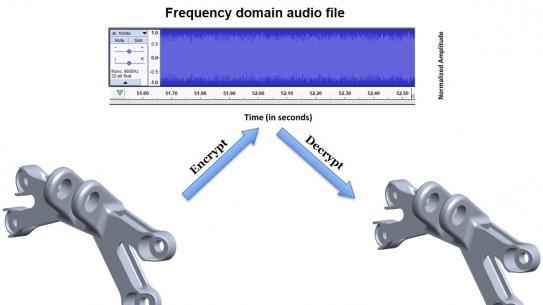Team secures NSF grant to advance novel CAD technology for 3D printing

NSF award will help NYU Tandon researchers develop a system for converting CAD files to a frequency domain, allowing them to hide 3D designs in sound files and more.
Computer aided design (CAD) files, the most common vehicle by which complex shapes and parts are delivered digitally, are a key part of the quickly evolving 3D printing field, which grew to $7.3 billion in 2018 and is set to double in the next four years.
However, CAD methods have not evolved fast enough to keep pace with advances in printing and the increasing sophistication of hackers and counterfeiters set on disrupting the 3D printing supply chain or stealing intellectual property.
Nikhil Gupta and Ramesh Karri, NYU Tandon professors of mechanical and aerospace engineering and of electrical and computer engineering, respectively, have received a National Science Foundation (NSF) award of $400,000 in collaboration with University of Delaware. Their work will advance a novel system that allows new possibilities and functionalities in CAD files.
The researchers, including Nektarios Tsoutsos, assistant professor of electrical and computer engineering at the University of Delaware, who received his doctorate from NYU Tandon, are perfecting a method of converting CAD files to a frequency domain, just like a digital sound file, in a way that would allow end users much more flexibility in how they slice and dice the files for printing.

The NSF award will allow the team to further research ways of converting files to a frequency domain using lossless algorithms — a class of data compression algorithms that allows the original data to be perfectly reconstructed from the compressed data — and let people who receive the files extract specific design features in a way that is not feasible in the current CAD file formats. Transformation to the frequency domain opens up possibilities for developing new compression and encryption methods.
“New generative design and multi-criteria optimization methods are revolutionizing the way designs are developed in the industry,” said Gupta. “These methods are also automating the design process, leading to thousands of design iterations in a short time. The new search, compression, and encryption methods will help designers deal with these files more efficiently and securely.”
“Development of these new capabilities open doors to a host of possibilities beyond the critical design and search functions” Karri added.
They noted that the project will involve post-doctoral fellows and graduate students.





